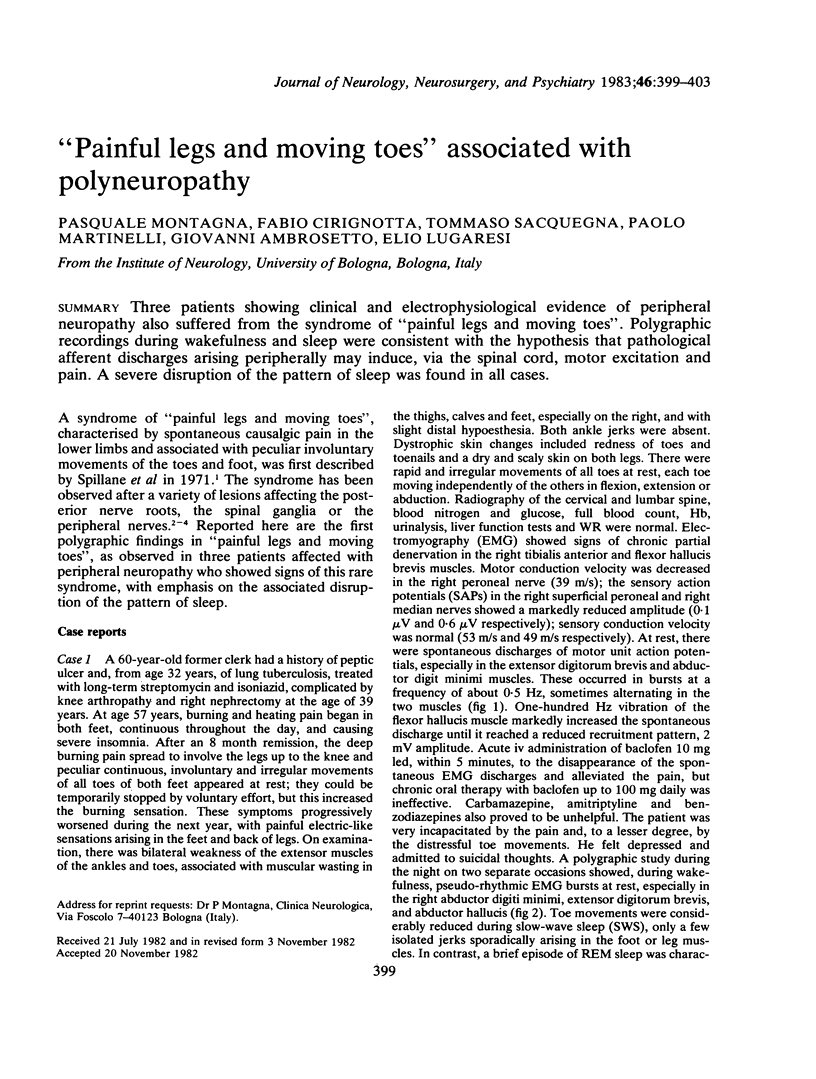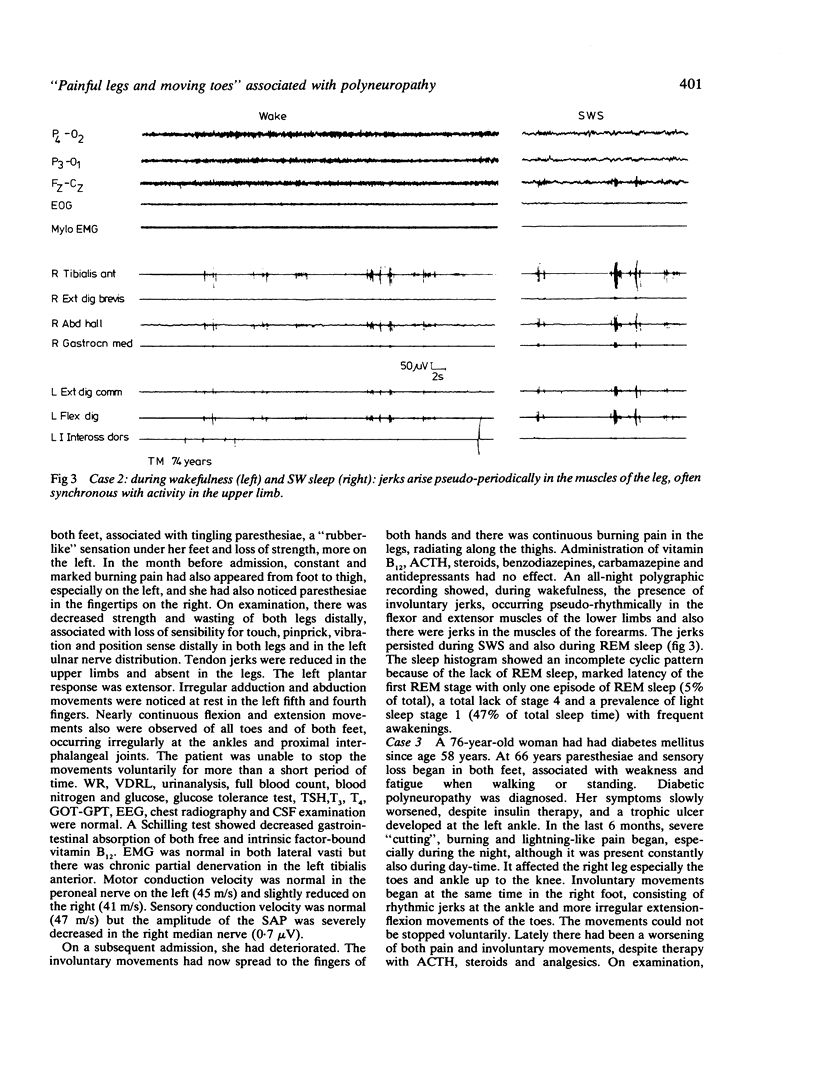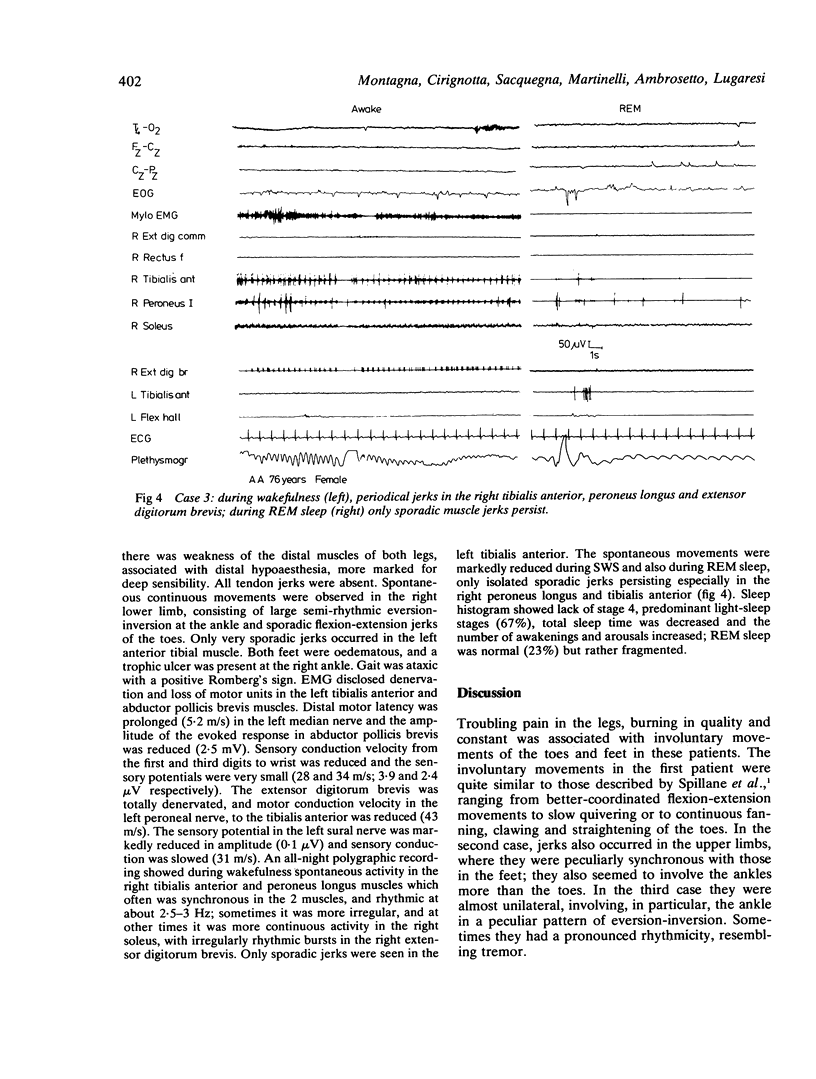Abstract
Three patients showing clinical and electrophysiological evidence of peripheral neuropathy also suffered from the syndrome of "painful legs and moving toes". Polygraphic recordings during wakefulness and sleep were consistent with the hypothesis that pathological afferent discharges arising peripherally may induce, via the spinal cord, motor excitation and pain. A severe disruption of the pattern of sleep was found in all cases.
Full text
PDF




Selected References
These references are in PubMed. This may not be the complete list of references from this article.
- Schott G. D. "Painful legs and moving toes": the role of trauma. J Neurol Neurosurg Psychiatry. 1981 Apr;44(4):344–346. doi: 10.1136/jnnp.44.4.344. [DOI] [PMC free article] [PubMed] [Google Scholar]
- Spillane J. D., Nathan P. W., Kelly R. E., Marsden C. D. Painful legs and moving toes. Brain. 1971;94(3):541–556. doi: 10.1093/brain/94.3.541. [DOI] [PubMed] [Google Scholar]
- Wulff C. H. Painful legs and moving toes. A report of 3 cases with neurophysiological studies. Acta Neurol Scand. 1982 Aug;66(2):283–287. doi: 10.1111/j.1600-0404.1982.tb04526.x. [DOI] [PubMed] [Google Scholar]


